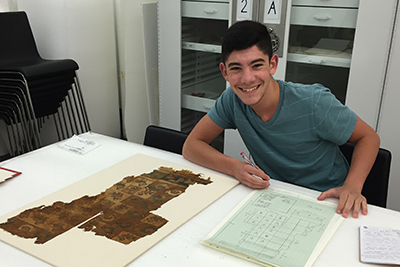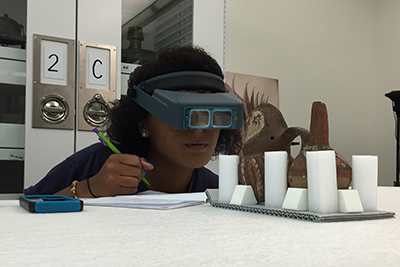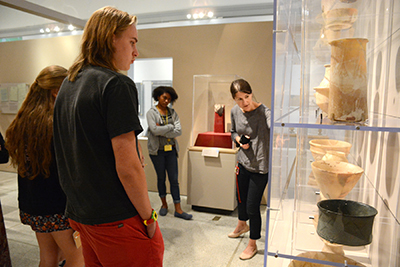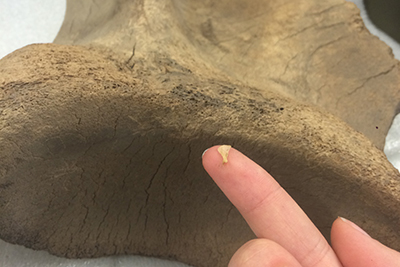For two weeks last summer, the Center for the Analysis of Archaeological Materials (CAAM) and the Museum’s Learning Programs Department offered an intensive learning experience for high school students called the Summer Institute in Archaeological Science (SIAS). Co-led by instructors Katherine Moore and Marie-Claude Boileau, SIAS explored the essential heritage of human technology through archaeology.
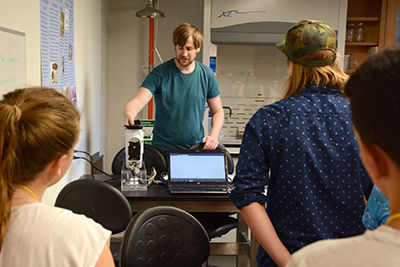
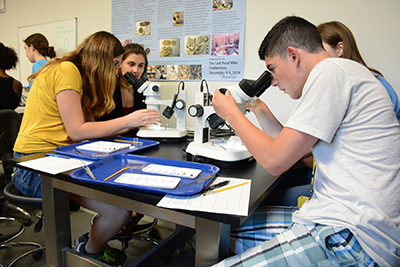
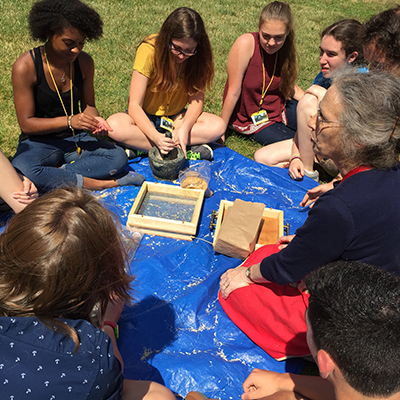
Students followed human innovation from the invention of fire to the development of stone tools, pottery, textiles, and metals. Plants and animals used as food showed the students how humans transformed food and landscapes. The physical impact of these changes on the human body was explored using skeletal remains from the Museum’s collections. Through lectures, discussions and hands-on laboratory activities students became familiar with the Museum’s collections and the scientific methods used to study different materials.
In an effort to provide a strong archaeological background to the course’s scientific lessons, the Ur and Pachacamac collections were used as case studies. Students learned about Ur first by visiting Iraq’s Ancient Past and then seeing more objects from the site in the Collection Study Room. None of the Museum’s large collection of textiles, tools, and ceramics from Pachacamac (a Peruvian ceremonial center) is on display so the students visited American Section storage to see objects that very few people have seen. Their “behind the scenes” experiences also extended to the Archives and the Conservation Department. The students were attentive to the many different kinds of scientific knowledge used in the daily work of Museum staffers, both in the care of objects and the analytical work carried out in CAAM. They were also challenged to develop their skills in drawing and graphic composition.
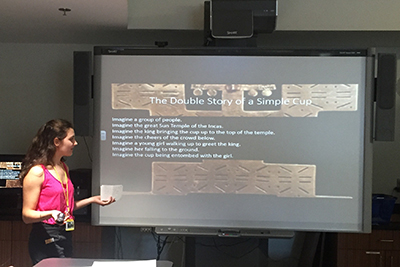
Among the daily assignments, the writing of an Instagram post and taking photographs in the galleries and the laboratories proved popular. See the caption above on the woolly mammoth to read what Giuliana Trinchieri shared on Instagram after the zooarchaeology lab activity.
For their final project, students applied their newly acquired scientific knowledge and skills to an object biography, choosing an artifact from the Ur or Pachacamac collections to analyze. For three afternoons, students examined, drew, measured, described, and researched their favorite object. On the last day, they presented the results of their research to their peers, instructors, and family.
As a pilot project, SIAS was a success. Students learned about the scope and significance of archaeological science and experienced a glimpse of college-level workloads and challenges. One of the summer participants, Claire Byrnes, a junior at the Science Leadership Academy, is now a CAAM intern for the school year 2016–17, helping us in the labs with various projects. Other students are using their experiences in planning or starting their college work. Moving forward, CAAM and Learning Programs will find different ways to engage with high school students.
